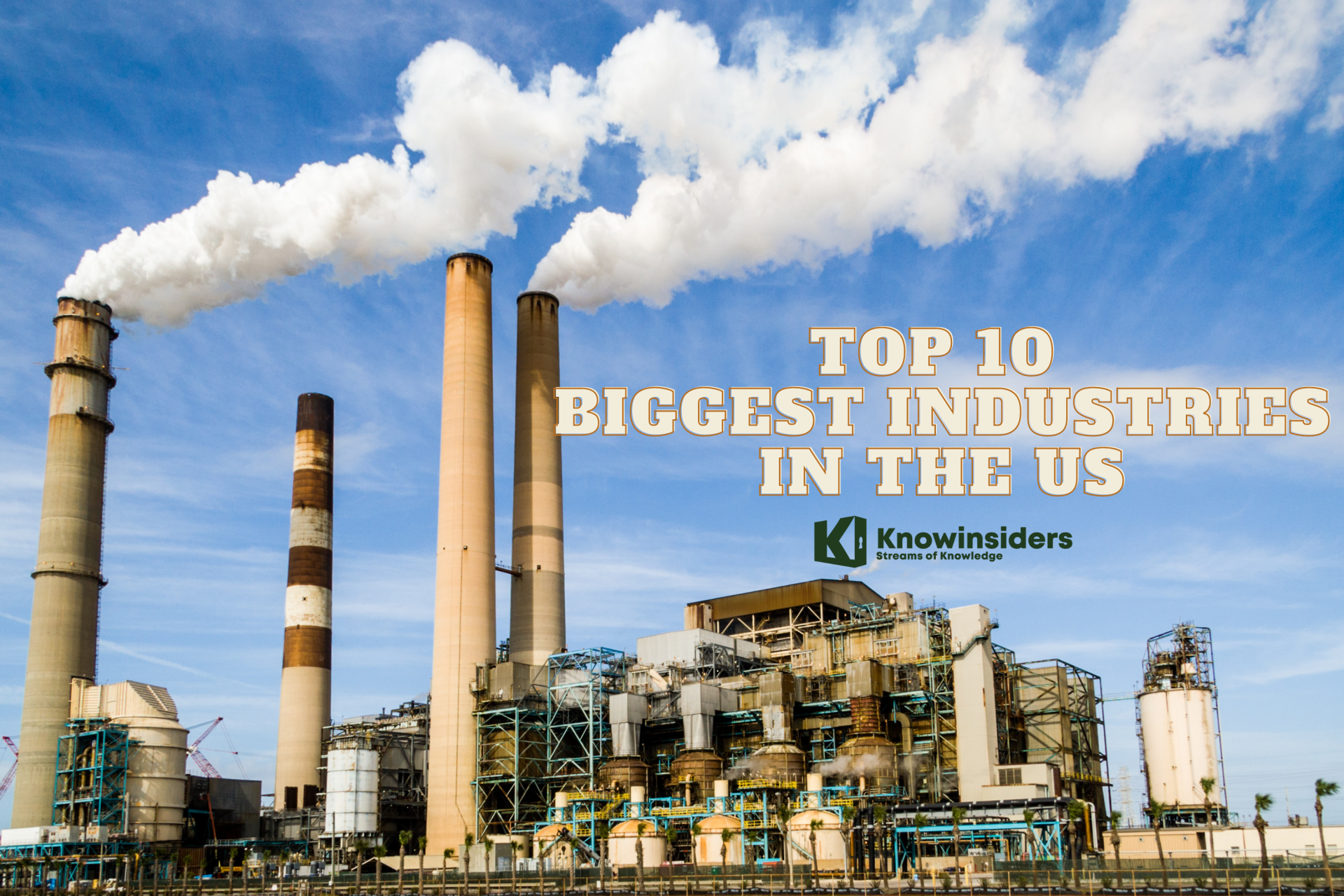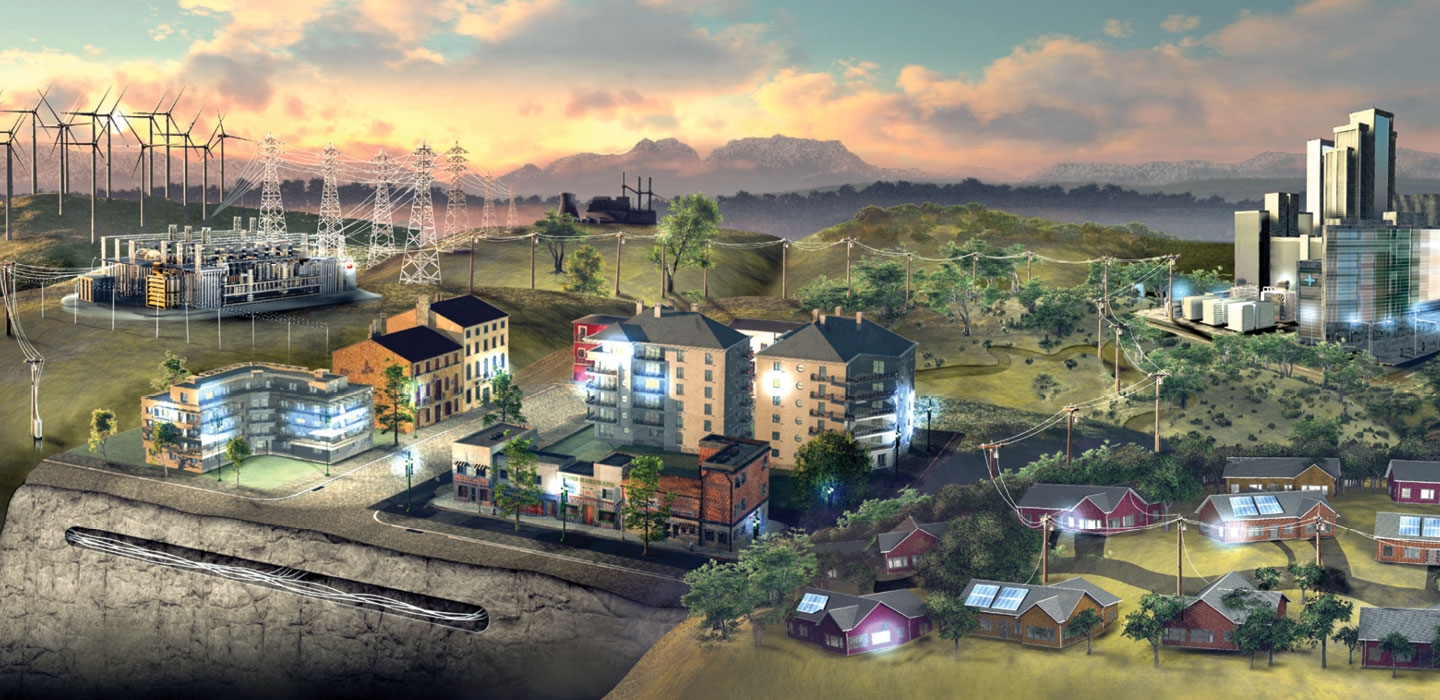Top 10 Biggest Industries In The United States Today
 |
| Top 10 Biggest Industries In The US. Photo KnowInsiders |
The United States is a world economic powerhouse with the largest nominal GDP in the world, valued at 18.46 trillion dollars which translate to 22% of the world’s nominal GDP. The economy of the United States is divided into three broad categories including the service sector, the manufacturing sector, and the agricultural sector.
Top 10 biggest industries in the US by GDP
| Rank | Industry | GDP value added (in $ billions), 2011 | % of total GDP |
|---|---|---|---|
| 1 | Real estate, renting, leasing | 1,898 | 13% |
| 2 | State and Local Government | 1,336 | 9% |
| 3 | Finance and insurance | 1,159 | 8% |
| 4 | Health/social care | 1,136 | 8% |
| 5 | Durable manufacturing | 910 | 6% |
| 6 | Retail trade | 905 | 6% |
| 7 | Wholesale trade | 845 | 6% |
| 8 | Non-durable manufacturing | 821 | 6% |
| 9 | Federal Government | 658 | 5% |
| 10 | Information | 646 | 4% |
1. Real Estate, Renting, And Leasing
 |
| Photo Millionacres |
Real Estate, renting, and leasing constitutes the largest sector of the United States’ economy with the GDP value added of $1.898 trillion accounting for 13% of the national GDP. The sector contributes to the economy in two fronts; the first being through consumer spending through rent and payment of household utilities, and the other being through residential investment which encompasses the construction of new housing units, broker fees, and residential remodeling.
| Also known as the housing sector, the industry plays an integral role in the US economy and the industry’s impact was best displayed during the 2008 recession where a nationwide decline in home prices triggered America’s worst economic recession in the 21st century. The housing sector also plays a critical role in employment with over 1.9 million people working in the real estate, renting and leasing industry. |
2. State And Local Government
The State and Local Government have a combined GDP value added of $1.336 trillion to become the second largest GDP contributor representing 9% of the total US GDP. Government spending is classified into two components government investment and government final consumption expenditure. Government investment is defined as the government spending used to finance projects with future or long-term benefits such as spending on research as well as spending on infrastructure.
Government final consumption, on the other hand, is the government’s spending on items for direct consumption. State and local government spending are usually financed through taxation or domestic and international borrowing.
3. Finance And Insurance
The Finance and Insurance sector is another top GDP contributor in the United States with the industry having a GDP value added of $1.159 trillion which is equivalent to 8% of the total GDP. The Finance and Insurance industry is made up of four distinct sectors which include insurance carriers, credit intermediation and Federal Reserve banks, commodity contracts and securities, and trusts and funds and other financial vehicles.
The growth of the finance and insurance industry is critical to the US economy as it helps in the facilitation of US exports. The industry is also estimated to directly employ over 5 million people in the United States which is equivalent to 4% of the nation’s total employment.
4. Health And Social Care
 |
| Photo Regis College |
The Health and Social Care industry in the country has a GDP value added of $1.136 trillion and represents 8% of the national GDP. Healthcare, in particular, was a key component of the two sectors with America's spending on healthcare per capita being the largest in the world at $8,608. Increasing obesity and non-communicable diseases such as cancer saw Americans spending more on curative, rehabilitative, and preventative care.
5. Durable Manufacturing
Durable Manufacturing is classified as the manufacturing sector engaged in the production of durable products such as computers, automobiles, firearms, sports equipment, house appliances, and aircraft which are characterized by long durations between purchases and are usually rentable.
The durable manufacturing industry in the United States has a GDP value added of $910 billion which represents 6% of the national GDP. The sector is highly volatile and is affected by local and international factors such as global oil prices as well as the performance of the US dollar on international money markets. The durable manufacturing industry plays a significant role in employment in the US economy with over 349,000 of Americans being either directly or indirectly employed in the industry.
6. Retail Trade
 |
| Photo Rappler |
The retail trade industry in the United States has a GDP value added of $905 billion which is equivalent to 6% of the total GDP. The industry encompasses the retailing process which is the final stage in the distribution of commodities to the final consumer.
The retail industry features fixed store retailers which are characterized by walk-in by customers who purchase merchandise for household or personal consumption. The retail industry is the largest employer in the United States economy with the sector being responsible for 10% of the total employment in the country.
Data from the National Retail Federation shows that the industry accounts directly or indirectly for over 15 million jobs. The sector also features online retailers such as Amazon and eBay who make millions of dollars in sales each day.
7. Wholesale Trade
Wholesale Trade involves the bulk distribution of commodities from producers to retailers or bulk consumers such as institutions and other wholesalers. Wholesalers are characterized by not spending on advertising targeted to the general public, and they do not have their own premises. Similarly, they are not designed for walk-in customers.
The Wholesale industry in the United States has a GDP value added of $845 billion which is equivalent to 6% of the total GDP. The industry is also a significant employer with over 5.7 million people or 4% of total employment in the US being employed in wholesale trade.
8. Nondurable Manufacturing
 |
| Photo Science News |
The non-durable manufacturing industry is involved in the production of nondurable commodities, which may be defined as all products with a lifespan of less than three years and include gasoline, electricity, and clothing among others. Non-durable manufacturing is an important economic pillar in the United States and has a GDP value added of $821 billion which translates to 6% of the national GDP.
While the non-durable manufacturing sector is less valuable than durable manufacturing, it employs way more people than durable manufacturing accounting for 4.4 million jobs compared to 349,000 jobs from durable manufacturing.
9. Federal Government
The Federal Government comes in ninth position with a GDP value added of $658 billion which accounts for 5% of the total GDP. The Federal Government is a key employer in the economy and employs about 2.795 million Americans who are employed by the Federal Government.
Healthcare, social security, and education take up the lion’s share of Federal Government investments accounting 25%, 24%, and 15% of the annual investments respectively.
10. Information
The Information industry encompasses companies and institutions which engage in the production, transmission, processing, storing, and selling of information which includes media companies, data processing companies, law firms, and telephone companies among others.
| The information industry is a key pillar of the US economy and has GDP value added of $646 billion which is equivalent to 4% of the total GDP. The sector is responsible for the employment of 2% of the total labor force in the United States totaling about 2.7 million jobs. |
Top 10 Most profitable industries in the United States economy:
10.Advertising & Marketing
$8.3 billion revenue last year for the 468 top advertising and marketing companies, showing that promoting and selling things can be just as lucrative as manufacturing them.
9.Construction
Home building is back again after getting walloped during the last recession, and 232 of the biggest 232 builders, contractors, and electrical companies took home $8.34 billion in sales last year.
8.Financial Services
The most prominent 246 financial companies, banks, investment firms, etc. combined for $11.8 billion in revenues last year.
7.Energy
The U.S. energy market remains dynamic, with just 100 front running firms earning $12.4 billion in revenues last year, led by XOOM Energy out of North Carolina.
6.Human Resources
The top 203 human resources companies cashed in on $13 billion profits last year, thanks to the fact that companies invested heavily in corporate training with a 15% increase from the previous year.
5.Consumer Products & Services
While this is a broad category, the top 226 companies brought home $14.4 billion last year, with some pretty cool innovations.
4.Logistics & Transportation
Getting from Point A to Point B may not be sexy, but it sure is profitable, with the top 157 transportation or logistics firms earning $15.2 revenue last year.
3.Business Products & Services
Encompassing just about every role you could imagine from building mobile apps to wholesaling to restaurants, this sector saw $15.9 billion in profits last year.
2.IT Services
While information tech and services is #10 on the list of biggest industries in the U.S., it ranks #2 overall in profits, with a stunning $17.5 billion in profits last year, led by companies like TRYFACTA, which provides cloud, big data, and IT services.
1.Health
Pharmaceutical manufacturing and sales, genetic testing, workplace drug testing, and all of the hospitals and medical services in the U.S. totaled $24.4 billion in revenues last year, making it the most profitable sector of our economy!
READ MORE: Top 30 Most Richest Town By States In The US
Top 10 US Industries with the highest net margins
10.Major banks
22.9% net margins last year
9.Regional banks
23% net margins last year
8.IT services
24% net margins last year
7.Savings banks
24% net margins last year
6.Biotechnology
24.6% net margins last year
5.Internet software/services
25% net margins last year
4.Major pharmaceutical companies
25.5% net margins last year
3.Tobacco
27.2% net margins last year
2.Investment managers
29.1% net margins last year
1.Generic pharmaceutical companies
30% net margins last year
Top 10 Biggest Industries by Employment in the US
 |
| Photo Bureau of Labour Statistics |
1.Public Schools in the US-6,646,292 employees
2.Hospitals in the US-5,021,662
3.Fast Food Restaurants in the US-4,593,559
4.Office Staffing & Temp Agencies in the US-3,307,096
5.Single Location Full-Service Restaurants in the US-3,234,635
6.Colleges & Universities in the US-3,152,117
7.Professional Employer Organizations in the US-2,993,445
8.The Retail Market for Jewelry-2,883,145
9.Supermarkets & Grocery Stores in the US-2,625,198
10.The Retail Market for Shoes-2,512,650
 Top 10 Largest Stock Exchanges In The World Top 10 Largest Stock Exchanges In The World The stock exchange plays a crucial role in world trade and economic stability. Here are the top 10 largest stock exchanges in the world. |
 Top 9 Biggest Airlines In The World Top 9 Biggest Airlines In The World Since the outbreak of Corona, the airline industry has been struggling with the massive impact of the pandemic. However, it does not stop some airlines ... |
 Top 10 Richest People In The Fashion Industry In 2021 Top 10 Richest People In The Fashion Industry In 2021 According to Forbes, these are the wealthiest fashion people in the world, with Bernard Arnault is the richest among them all. Keep reading to know ... |



























